
The exterior of St Paul’s Convent Chapel
This article was published previously in Saigoneer http://saigoneer.com
Occupying a large, leafy compound on Tôn Đức Thắng street in District 1, the Convent of Saint-Paul de Chartres is another rarely-visited haven of peace in busy Hồ Chí Minh City.
Faced immediately after the conquest with an urgent need for education, healthcare and welfare facilities in their new colony, the French turned to the religious orders for support.
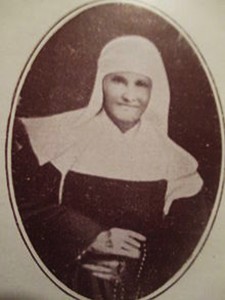
Reverend Mother Superior Benjamin (1821-1883)
In March 1860, at the invitation of Bishop Dominique Lefèbvre, the Congregation of the Sisters of Saint-Paul de Chartres sent two Sisters to Saigon, where they set up a Sainte-Enfance or “Holy Childhood” orphanage for local street children in temporary premises close to the first bishop’s palace on modern Nguyễn Công Trứ street (District 1). In the following year, the Reverend Mother Superior Benjamin arrived from Hong Kong to manage this establishment.
In 1862, Admiral-Governor Bonard responded to a request by the Reverend Mother Superior for larger premises by granting the Sisters a large plot of land on boulevard de la Citadelle (modern Tôn Đức Thắng street), between the St Joseph’s Seminary and the naval shipyard. Nguyễn Trường Tộ was appointed as architect, and in May 1864 the École de Sainte-Enfance complex – comprising Orphanage, Convent and Convent Chapel – was inaugurated.
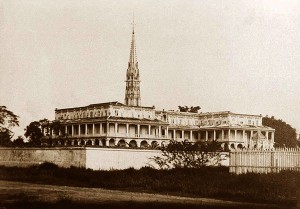
Emile Gsell’s 1866 photograph of Nguyễn Trường Tộ’s original Sainte Enfance compound
Over the following decade, as many young Vietnamese women chose to enter the order, the Sisters were able to expand their operations throughout the south. They opened schools and orphanages in Tân Định, Thị Nghè, Biên Hòa, Mỹ Tho and Vĩnh Long; they founded and ran the Chợ Quán Hospital and the Hôpital indigène in Thị Nghè; and they supplied nursing staff to the Hôpitaux militaires (Military Hospitals) in Saigon and Mỹ Tho and the Hôpitaux indigènes (local people’s hospitals) in Mỹ Tho and Biên Hòa. Then in 1883, after the French had established a foothold in the north, the Sisters opened orphanages and hospitals in both Hà Nội and Hải Phòng.
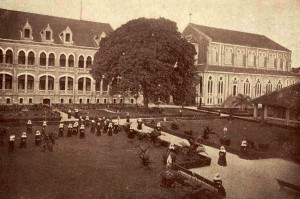
St Paul’s Convent in the early 20th century
Unfortunately, since their original Saigon headquarters buildings had been constructed largely from wood, termite damage and dry rot quickly took its toll, and by the 1880s the Sisters were obliged to carry out a costly rebuild. This time they turned to Father Charles Boutier of the Société des Missions Étrangères de Paris (Society of Foreign Missions of Paris, MEP), an architect of considerable merit who had previously designed the Thủ Đức Church. The new complex was inaugurated in 1895.
In 1924, the name of the compound was officially changed from Saint-Enfance to Couvent St Paul de Chartres (St Paul’s Convent).

In 1945, the Convent was accidentally hit by more than 30 Allied bombs, causing serious damage to many of the buildings
Being so close to the naval port, the Convent was accidentally hit in 1945 by more than 30 Allied bombs, which caused serious damage to many of the buildings. They were extensively reconstructed in the period 1946-1952. In 2009, the entire compound was completely refurbished.
After 1975, the various educational and medical facilities run by the Sisters were brought under government control. Since that time, St Paul’s has continued to function as a Christian community under monastic vows, although it no longer occupies the whole of the original compound.
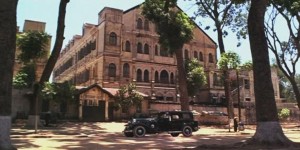
The former convent building used to depict the Pensionnat Lyautey in Jean-Jacques Annaud’s 1992 film version of Marguerite Duras’ The Lover)
The section which from 1908-1939 housed the Clinique du Docteur Angier now functions as a kindergarten, while the building which sits on the Tôn Đức Thắng-Nguyễn Hữu Cảnh street junction (used to depict the Pensionnat Lyautey in Jean-Jacques Annaud’s 1992 film version of Marguerite Duras’ The Lover) was taken over by the government after 1975 and now functions as Saigon University’s Nursery School Teacher Training Faculty.
Today, the centre piece of the compound is still the Convent Chapel, a Gothic structure dating from 1895 which was extensively rebuilt after sustaining bomb damage in 1945. Accessed by a side stairway, it comprises a tall vaulted nave flanked by vaulted aisles and side corridors.
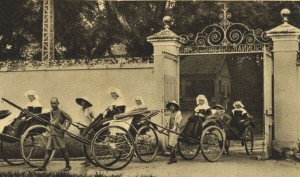
Another early 20th century image of St Paul’s Convent
On the ground floor immediately behind the Convent Chapel is a Heritage House (Nhà Truyền thống), which may be visited on request. Set up like a small museum, it recounts the history of the Congregation of the Sisters of Saint-Paul de Chartres in their native France, and the establishment and development of St Paul’s Convent in Saigon, a large model of which dominates the display area. The Heritage House also introduces other aspects of the order’s charitable work throughout the region.
Getting there
Address: Tu viện Phaolô, 4 Bis Nguyễn Trung Ngạn, Phường Bến Nghé, Quận 1, Thành Phố Hồ Chí Minh
Telephone: 84 (0) 8 3822 3387, 84 (0) 8 3910 4454 (Vietnamese language only)
E-mail: info@saintpaulsg.com
Opening hours: On request 7am-12pm, 2pm-5pm daily
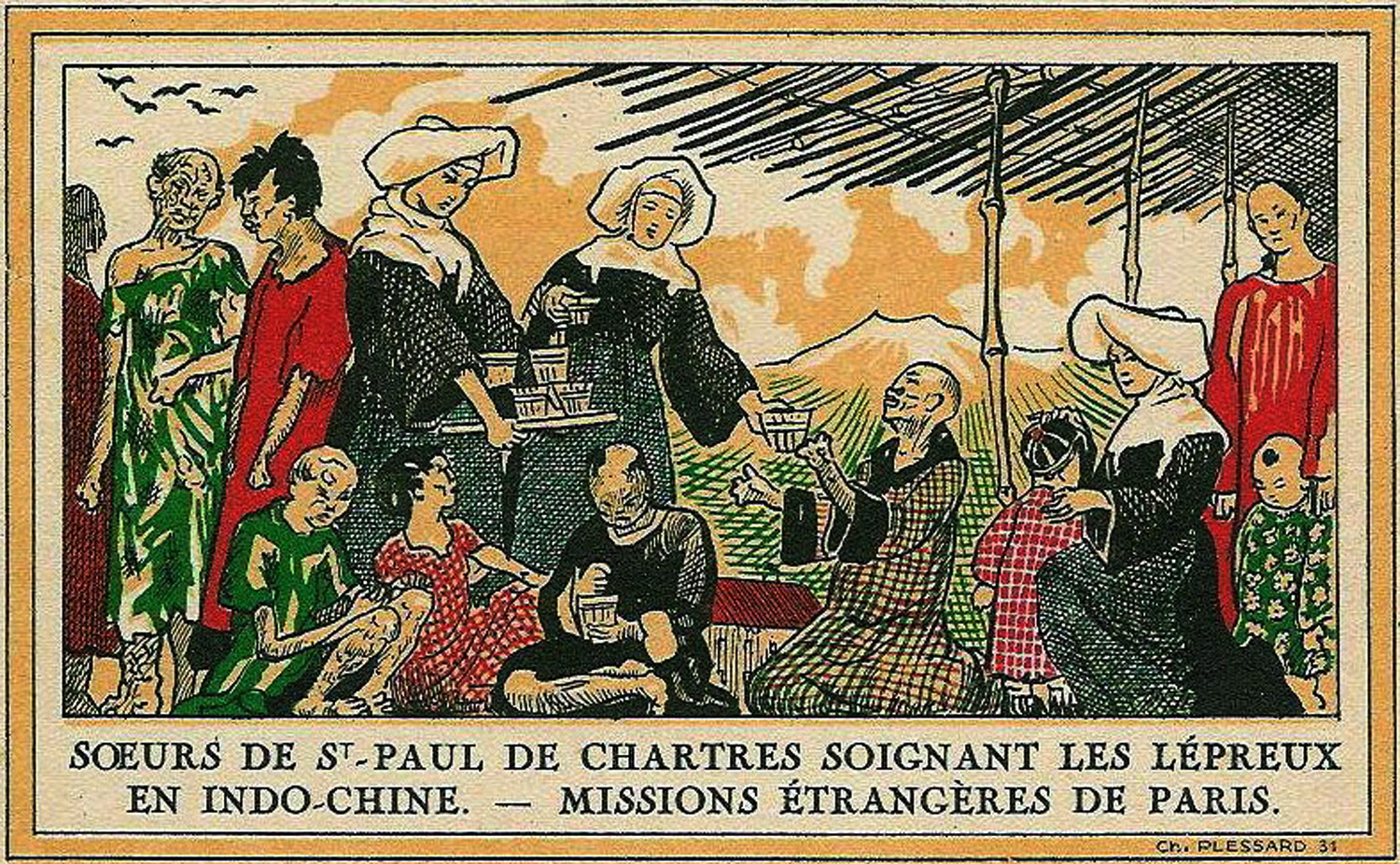
A cartoon depicting the charitable work of the Sisters

Another view of the exterior of St Paul’s Convent Chapel
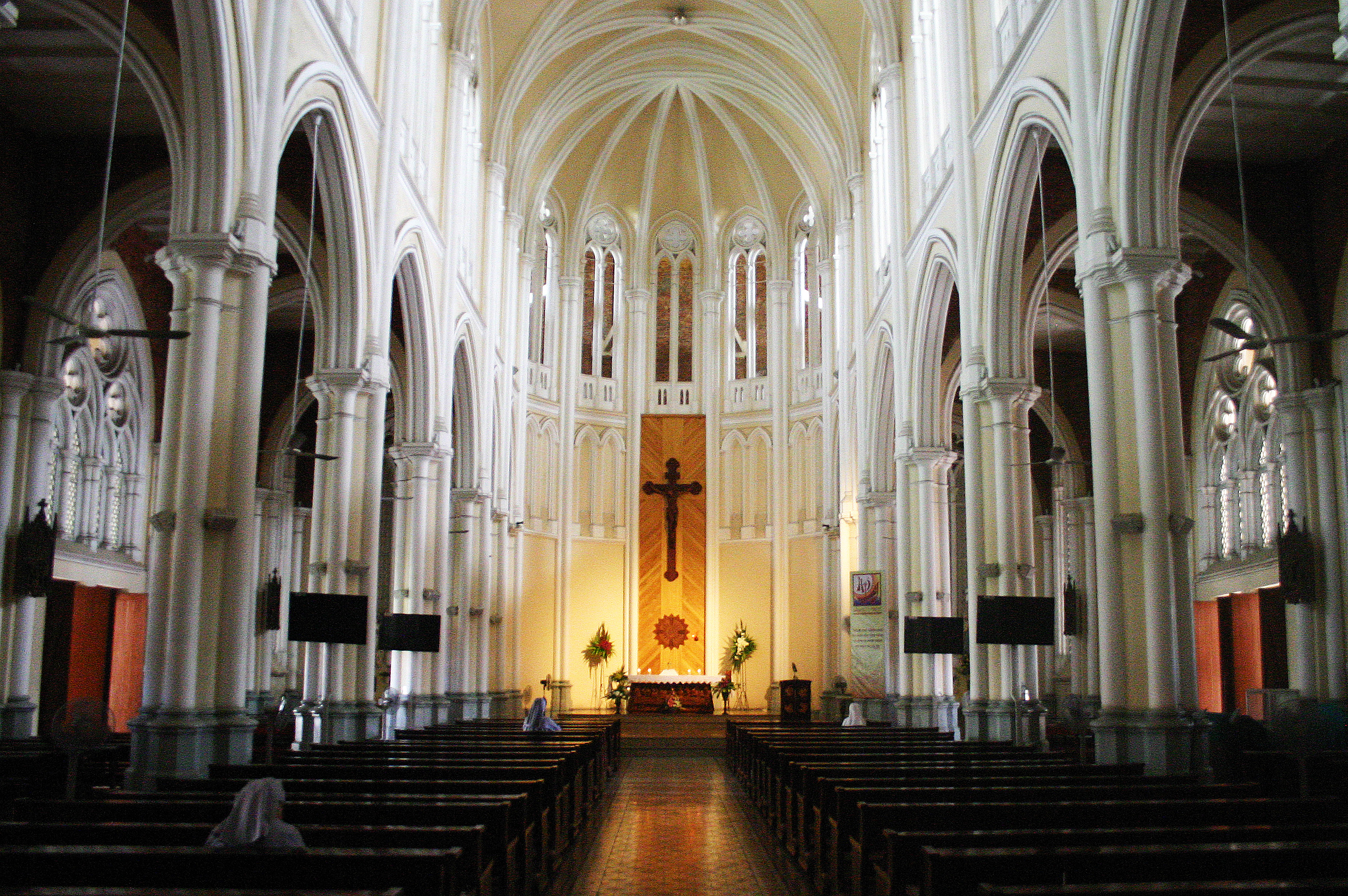
The interior of St Paul’s Convent Chapel

The interior of the St Paul’s Convent Heritage House
Tim Doling is the author of the guidebook Exploring Saigon-Chợ Lớn – Vanishing heritage of Hồ Chí Minh City (Nhà Xuất Bản Thế Giới, Hà Nội, 2019)
A full index of all Tim’s blog articles since November 2013 is now available here.
Join the Facebook group pages Saigon-Chợ Lớn Then & Now to see historic photographs juxtaposed with new ones taken in the same locations, and Đài Quan sát Di sản Sài Gòn – Saigon Heritage Observatory for up-to-date information on conservation issues in Saigon and Chợ Lớn.

